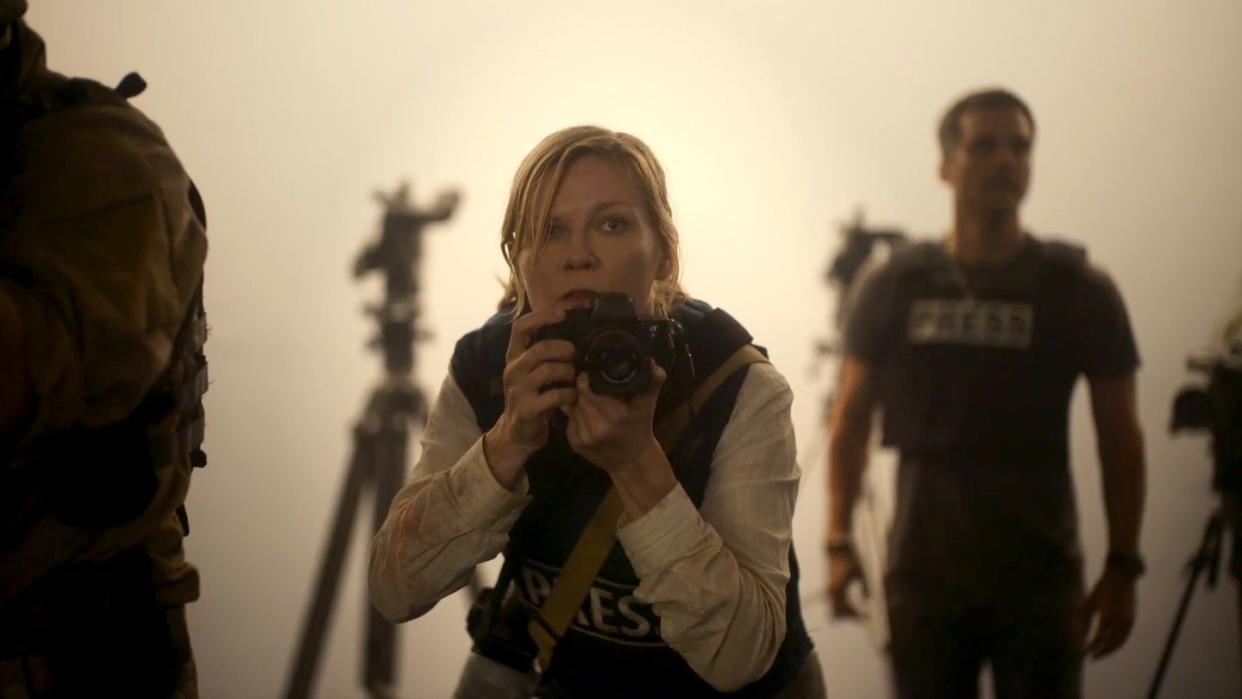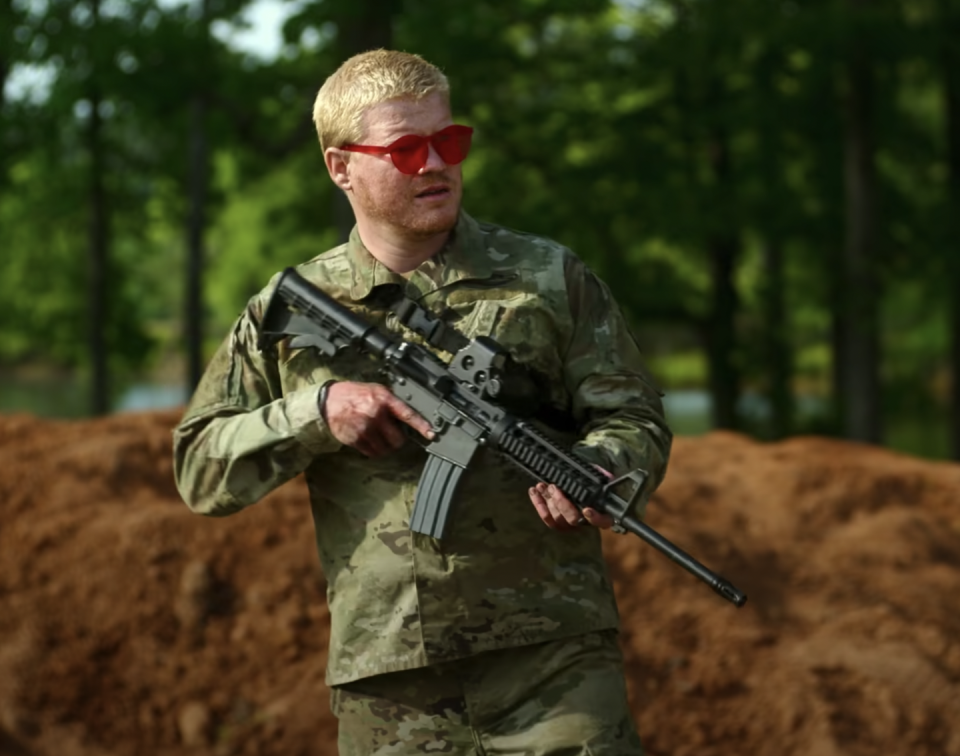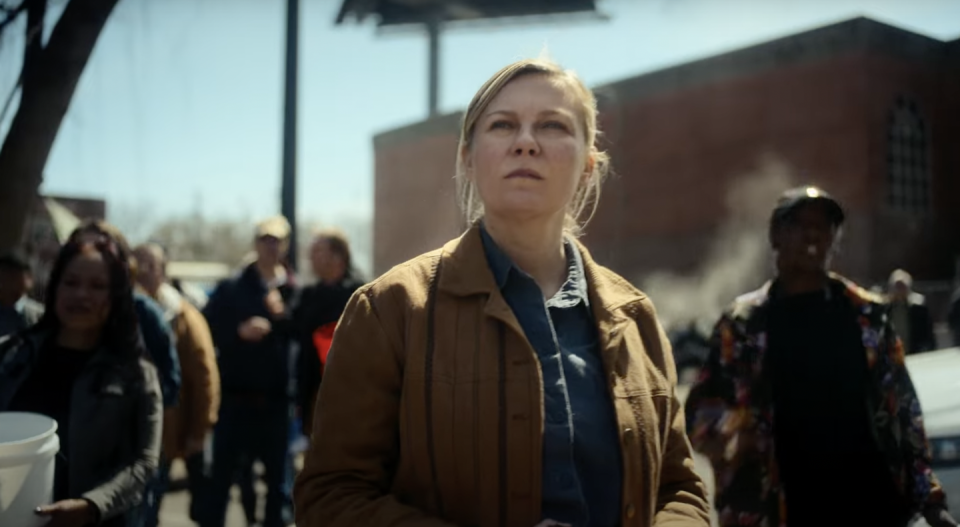The Ending of ‘Civil War’ Should Scare the Sh*t Out of You

- Oops!Something went wrong.Please try again later.
This story contains spoilers for Civil War.
Congrats, reader. If you made it here, that means you endured the brutal 109 minutes that comprise A24’s Civil War. You came to terms with the reality that America is so fucked up nowadays that a British filmmaker (Alex Garland) was moved to write speculative fiction about our downfall. You saw “GO STEELERS!” on that Pennsylvania underpass and wondered if the NFL could make it through an American Civil War. You asked yourself, When will Jesse Plemons ditch the scary shtick and just play a rom-com lead? I like that guy!
Most of all, you’re still trying to make sense of that ending, which sees a Call of Duty–esque raid on the White House—and the death of one of the film’s heroes. So in this story, I’ll explain exactly how Torrance Shipman evolved from a do-gooding cheerleader at San Diego’s Rancho Carne High School to a weary war photographer during the second American Civil War.
(Sorry. That’s a Bring It On joke, and it was not very good. Moving on.)
[Trump voice] The country is doing well in so many ways...
Throughout Civil War, I wondered if I missed an important line of dialogue that told us how this whole thing started—because this film doesn’t really tell us much about its central conflict. A few important bits we learn (and infer) about this particular dystopia:
• Nineteen states seceded from—and are violently rebelling against—the United States government. The collection of states is called the Western Forces, which includes California and Texas (an unlikely but presumably powerful alliance).
• Don’t let President Nick Offerman’s opening scene fool you; this government isn’t so diplomatic anymore. He seemingly ushered in a dangerously authoritarian reign, where journalists are executed on sight in the nation’s capital; the Western Forces consider him a dictator; and he’s at least three terms into his presidency.
• We’re far enough into the conflict that a large amount of America has been ravaged by the war. The New York Times is barely a newspaper anymore. There was, at one point, an “Antifa Massacre.” Some communities play Switzerland in this whole thing and live in relative peace...with armed protection.
Apparently, the lack of exposition is intentional. A24’s press notes for Civil War—which I found incredibly helpful and will refer to later on—outright state that the film is supposed to be a “Rorschach test of America, left for viewers to wrestle with on their own.” Cailee Spaeny (who plays Jessie in the film) told A24, “You are putting pieces together for yourself. Your internal feelings about why or how war like this would start and the cracks that form to cause a war to happen in America is up to you to fill in.”
Now, I’m not sure if I totally agree with this, because Garland positions the team of journalists as the heroes of the story—and they’re sympathetic to the Western Forces. Plus, you know, what happens at the very end of the film...

“You sacrificed Kirsten Dunst!”
This is what a woman screamed during my Civil War screening. I agree—it’s messed up! The final stretch of Civil War shows the Western Forces staging an attack on the White House, with intent to kill the president. (Fun fact, from A24: Most of that exterior set was real. “At some point it was decided for all the right reasons, safety among them, we’re going to build that block,” production designer Caty Maxey said. “We built four-hundred-foot-long buildings [and] two sides of the street in three and a half weeks.” Imagine!)
During the White House raid, Jessie is increasingly thrilled by the pursuit of the perfect photograph. She constantly puts herself in the line of fire until—as the Western Forces are just a couple rooms away from reaching the president—she’s right in front of a bullet. Lee (Kirsten Dunst) puts down her camera and throws herself in front of the gunfire. As she falls to the floor, Jessie takes a picture of her mentor’s final moments.
It’s a brutal resolution for what I felt was the strongest thread in Civil War: the psychology of the war journalist. Throughout most of the film, Lee preaches one thing to Jessie: Document the moment by any means necessary. By the end of Civil War, though, she sees futility in her work; by Lee’s admission, her photographs were a warning that was never received. During the White House skirmish, what’s surely a horrible case of PTSD comes to a head. Lee can hardly bring herself to use her camera. You have to wonder if—seeing the Western Forces overtake the government, which would surely breed more bloodshed—she simply sees no use in capturing another death. She chooses to save a life and give her own.
“She sees it and hates it for her, because there’s part of Lee that’s like, Don’t do this to yourself,” Dunst told A24. “There’s part of Lee that becomes very protective of her because she knows the addiction to what they’re doing, this need to put themselves in the worst possible situations to tell the truth about what’s going on. There’s a real warning: Don’t become me. Don’t become hardened. Don’t lose your life.”
Meanwhile, we’re left to choose how we feel about Jessie’s decision to photograph Lee’s death. As Dunst implied, is Lee addicted to the thrill of the work? Or is she simply documenting the truth?

RIP President Ron Swanson
So is this guy a Trump stand-in? I’d say no. Actually, quite the opposite. My take is that Garland cast an actor as affable and beloved as Nick Offerman just to show that even someone who is seemingly good has the potential to destroy a nation. Plus, we don’t really hear from the guy. We really only see him at the beginning and end of the film.
In the final moments of Civil War, the Western Forces finally close in on the president, and Joel (Wagner Moura) has his interview moment. He requests a quote from the president, who says, “Don’t let them kill me!” Joel replies with the best line of the movie: “That’ll do.” Then the Western Forces troopers kill the president, and Jessie takes—as we learn in the end credits—a photo of the Army members surrounding his dead body.
We’re left to wonder where the United States goes from there. It’s highly unlikely that we’ll ever find out, unless Garland is truly deranged and directs Civil War 2. The Western Forces would have to rebuild the American government from the ground up—if they’re even interested in doing such a thing.
What Civil War offers, as far as its political statement goes, is a warning. Garland has repeatedly called his film a parable, meant to tell us what America might look like should its fault lines continue to multiply. “The modern state of civil war is a fractured collapse across the board,” the director told A24. “This is not a repetition of the previous Civil War. I don’t think America or the rest of the world is at danger of the clear demarcations of the previous Civil War. That’s not the risk the world faces. We are facing a disintegration risk.”
You Might Also Like

